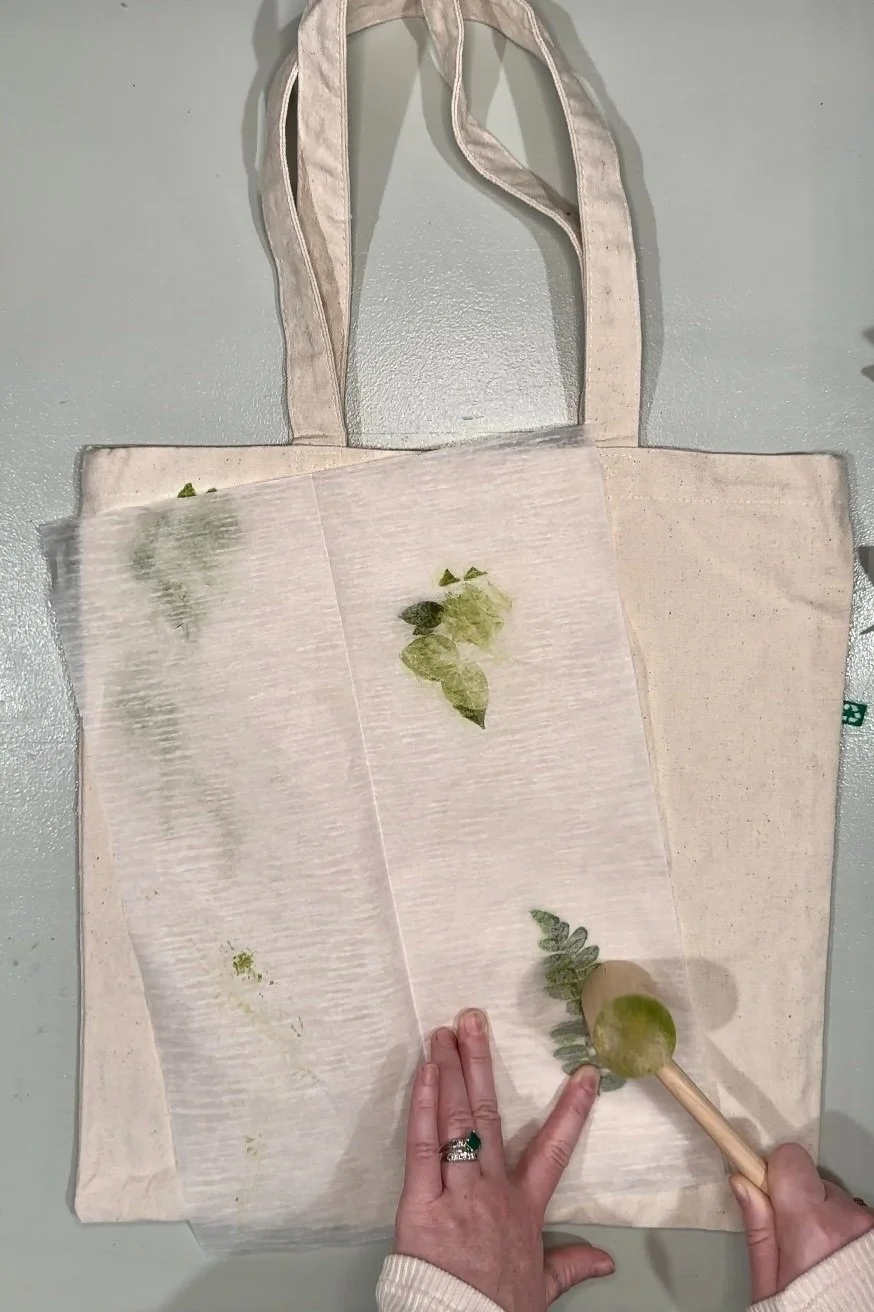Activity: Flower Pounded Tote Bag
Materials Needed:
Canvas Tote Bag
Flowers or Greenery
Scissors or Garden Shears
Wax Paper
Hammer (a mallet or ball peen works best but just about any hammer will do)
A hard work surface
Alum Powder
1 Gallon of Water
(Optional) Fine tip pen or marker
STEP 1: Prep your tote bag
The first thing you’ll need to do is to prepare your tote bag so that the natural dyes of the flowers will absorb properly. I recommend doing this before gathering your flowers so they do not wilt. However, storing any harvested flowers and leaves in the fridge will help them from wilting.
Start by washing your tote bag but you do not need to dry it.
Next, dissolve 2 tsp of alum powder into a gallon of warm water. This ratio is important to prepare the canvas so make sure to get as close to a gallon (16 cups) as you can. As someone who has tried and failed by skipping this step, trust me when I say that it really makes a difference.
Soak the tote for 20-30 minutes. Do NOT rinse. You can either lay it flat or hang it to dry. Once it’s dry, you can iron it, if you wish.
STEP 2: Arrange flowers
The next step is to do a trial arrangement of the flowers. Lay out the blooms and greens however you desire. You won’t start pounding them just yet but this step helps to visualize the final product. This step is something I prefer to do but you don’t have to do it. Either way, be prepared for some deviation. Sometimes it comes out different than I think it will but I’m also happy with the results.
Once you’ve gotten an idea for arrangement, you’ll clear all but one flower away. I like to start with an “anchor.” Sometimes it’s the middle of the bag, sometimes it’s the biggest piece, and sometimes it’s a corner. This is totally up to you. Start wherever you want.
Try to lay the flower flat and then cover it with the wax paper to keep it in place. I hold it down with one hand and then grab the hammer with the other.
NOTE: If your flower still has a stem, trim away any parts you don’t want to transfer or any parts that prevent the bloom from laying flat. For flowers with multiple blooms per stem, or clustered blooms, I remove each flower. Think hydrangeas with its globe of tiny flowers- I recommend removing each flower to transfer individually.
STEP 3: Hit it!
This is the fun part!
It’s quite simple. Once you’ve placed your flower and covered it with the wax paper, hold it with one hand and (carefully) strike the flower repeatedly. With this process, it’s important to be thorough to make sure as much pigment transfers as possible so I recommend making a lot of small strikes close together, slowly covering the whole flower or leaf.
Repeat this step on as many transfers as you wish to make. Fill the tote bag up or leave it minimal. It’s up to you.
I find this activity extremely cathartic. I like to assign a specific frustration or situation to each item I start pounding. This helps me to work through the pent up emotions associated with that situation. (And bonus, I don’t take it out on my husband. He loves that part.)
Give it a try. Take your anger out on something that’s going to end up beautiful.
TIP: For any leaves that don’t transfer well the first time, try flipping it over. Some leaves have a waxy surface that prevents the pigment from getting through. By transferring the underside of the leaf to the canvas, you get more a better color transfer. This also works if you want to try transferring a leaf multiple times! Note that for various reasons, multiple transfers don’t always work and are often less pigmented.
(OPTIONAL) Details
To finish off your tote bag, you can take a fine tip pen or marker to outline and add details to the prints. You could even take colored pencils to add depth to your transfers. This is your chance to take your art and add more detail and expression but it is completely optional.
Care Instructions:
You can heat set the transfers by covering the tote in parchment paper and using an iron (without steam) on the canvas or a mid-range setting. I do not recommend washing the tote as you normally would. This can cause the pigments to wash out, even with heat setting the fabric. For that reason, I suggest spot cleaning as needed with warm water and a mild detergent.






